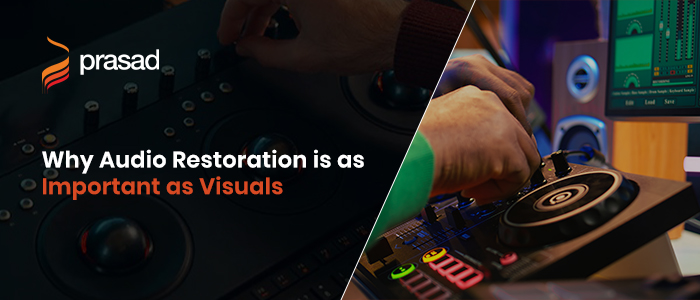Introduction – Films Are Not Just About Visuals
When we think of classic cinema, we imagine iconic visuals-the sweeping landscapes, theatrical close-ups, and smashing frames that represented eras of storytelling. Yet films are never morally visual experiences. Sound-music, dialogue, and atmosphere satisfy the cinematic journey. Without it, the story loses its essence. That’s why audio restoration is as essential as revising film reels or restoring color.
In the area of film sound preservation, professionals make sure that the voices, melodies, and effects of the past stay as clear and strong as they were on the day of release.
The Emotional Power of Sound
Sound is not a specialized element-it’s dynamic language. The crackle of footsteps in a suspense thriller, the crescendo of violins in a romantic ending, or the funny dialogue in a comedy-these elements promote moving pictures into unique storytelling.
- Dialogue: Words carry the passionate intent of actors. Fading or shapeless dialogue can strip a scene of its meaning.
- Music: Scores make emotional cues. Think of Hitchcock’s Psycho without its shrieking violins-would it be as scary?
- Ambient Sound: The rustle of leaves, the bustle of streets, or the quietness before a storm all build immersive worlds.
Studies in film psychology imply audiences can ignore minor visual flaws, but poor audio quality ruins immersion immediately. This establishes why sound in classic films must be treated as sacred.

The Forgotten Half of Preservation
When people debate restoration, the discussion often spins around imagery-removing scratches, stabilizing frames, or improving colors. Unfortunately, audio has long been ignored in conservation.
Unlike visuals, which degrade visibly, sound loss is incremental and more difficult to witness. Original tapes and magnetic tracks decline, leaving indistinct voices or distorted music behind. This is why many converted classics look stunning but still sound dated-because their audio did not acquire the same care.
Risks of Neglecting Audio
Ignoring audio restoration comes at an increased cost. Classic movies risk failing not just transparency but also narrative probity:
- Fading Voices: Actors’ performances become concave when their spoken tones are lost.
- Lost Music Scores: Many actual scores written for movies have been irretrievably lost due to degraded audio masters.
- Broken Narratives: Poor sound quality disrupts vibrant rhythm, leaving future viewers detached from the story.
Why Sound Matters for Legacy
Preserving the past is not just about saving images-it’s about safeguarding full experiences. Restored audio ensures that future generations can enjoy films authentically, as their creators intended.
- Cultural Legacy: Voices of actors, speeches, and songs form part of a nation’s cultural identity. Losing them means losing history.
- Educational Value: For film students, hearing how sound was created in classics is as important as studying their visuals.
- Inspiration for Filmmakers: High-quality audio restoration lets today’s creators learn how layering, timing, and soundscapes shaped cinema’s golden age.
Legendary director Martin Scorsese has endorsed film sound preservation, highlighting that without original sound, we lose half the cinematic experience.
Conclusion – Keeping the Magic Alive
While digital technology has made repairing visuals a recognized practice, audio restoration earns equal recognition. Ignoring sound means silencing the very voices and melodies that carried cinema through decades.
By prioritizing film sound preservation, we cover not just films, but the memoirs, cultures, and emotions implanted within them. For audiences today and tomorrow, this assures that sound in classic films remains as vivid and immersive as ever. After all, films without sound may look attractive, but they will never feel complete.

